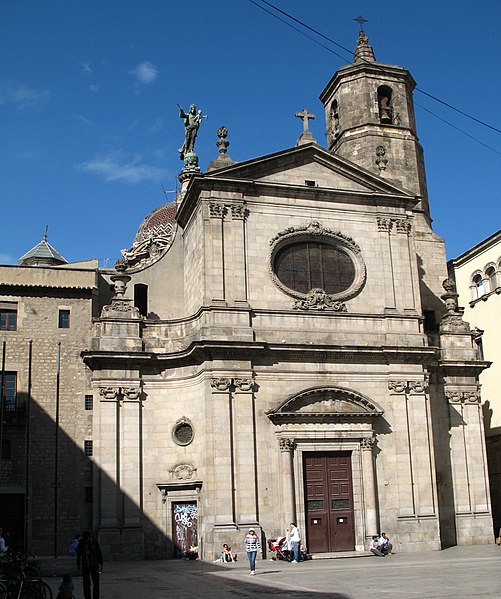Order of the Blessed Virgin Mary of Mercy
The Royal, Celestial and Military Order of Our Lady of Mercy and the Redemption of the Captives, also known as the Mercedarians, is a Catholic mendicant order established in 1218 by Peter Nolasco in the city of Barcelona, at that time the capital of the Principality of Catalonia, part of the Crown of Aragon, for the redemption of Christian captives. Its members are most commonly known as Mercedarian friars or nuns. One of the distinguishing marks of the Order of the Blessed Virgin Mary of Mercy is that, since its foundation, its members are required to take a fourth vow: to die, if necessary, for another who is in danger of losing their faith. The Order exists today in 17 countries.
Our Lady of Mercy - From the Generalate of the Mercedarian Order
Peter Nolasco (1189-1256)
La Mercè basilica in Barcelona where the Mercedarian mother church, current building built between 1765 and 1775.
Convento de la Merced, founded in 1607, is a Merecedarian convent, which now serves as a church, in the small town of Valdunquillo, in northern Castile.
Mendicant orders are, primarily, certain Roman Catholic religious orders that have adopted for their male members a lifestyle of poverty, traveling, and living in urban areas for purposes of preaching, evangelization, and ministry, especially to the poor. At their foundation these orders rejected the previously established monastic model. This model prescribed living in one stable, isolated community where members worked at a trade and owned property in common, including land, buildings and other wealth. By contrast, the mendicants avoided owning property at all, did not work at a trade, and embraced a poor, often itinerant lifestyle. They depended for their survival on the goodwill of the people to whom they preached. The members of these orders are not called monks but friars.
Cluny Abbey, a former Benedictine monastery in Saône-et-Loire, France. It was at one time the center of Western monasticism.





